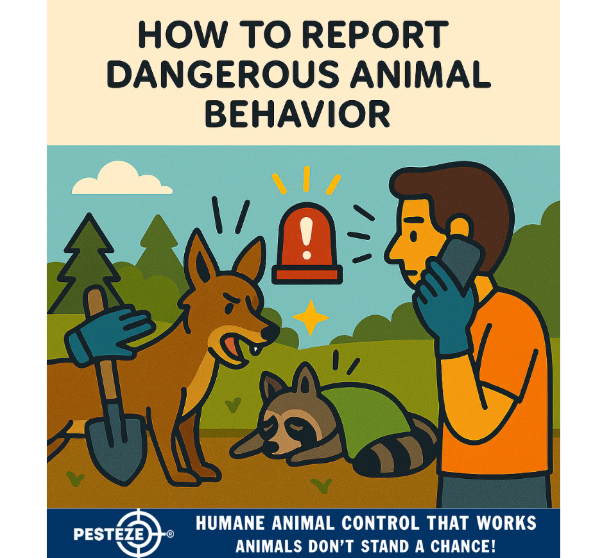HOW TO REPORT DANGEROUS ANIMAL BEHAVIOR

HOW TO REPORT DANGEROUS ANIMAL BEHAVIOR
SUMMARY
Reporting dangerous animal behavior is essential for protecting public safety, pets, and wildlife. Whether you witness aggression, erratic movements, or signs of illness, timely reporting can prevent harm and help authorities respond appropriately. This guide explains how to identify threatening behavior, who to contact, and what information to provide. By acting responsibly, you contribute to safer communities and humane animal management.
FEATURES
-
Recognize Warning Signs: Learn how to identify aggression, fear, or illness in animals.
-
Document the Behavior: Take notes, photos, or videos to support your report.
-
Avoid Direct Confrontation: Keep a safe distance and never attempt to handle the animal.
-
Contact the Right Authorities: Know when to call animal control, wildlife services, or emergency responders.
-
Provide Clear Details: Share location, species, behavior, and time of incident for accurate response.
-
Follow Up if Needed: Stay informed and cooperate with officials during investigations or containment efforts.
GUIDE DESCRIPTION
Dangerous animal behavior can pose serious risks to people, pets, and other wildlife. Whether it’s a stray dog showing signs of aggression or a wild animal acting erratically, knowing how to report the situation properly is crucial. This guide walks you through the steps to take when you encounter threatening animal behavior.
Start by recognizing the signs. Aggressive posturing, growling, lunging, excessive vocalization, or disorientation may indicate that an animal is a danger to others. In wildlife, unusual daytime activity, stumbling, or foaming at the mouth could signal disease or distress.
Do not approach or attempt to calm the animal. Your safety comes first. Instead, observe from a distance and document what you see. Photos or videos can help authorities assess the situation more accurately.
Next, contact the appropriate agency. For domestic animals, call local animal control or non-emergency police lines. For wildlife, reach out to your state’s fish and wildlife department or environmental health office. If the animal poses an immediate threat, dial emergency services.
When reporting, be specific. Include the exact location, time, species (if known), and a detailed description of the behavior. Mention if children, pets, or others are nearby and at risk.
After your report, stay available for follow-up. Authorities may need additional information or updates. Cooperating with their efforts ensures a swift and effective resolution.
By reporting dangerous animal behavior promptly and accurately, you help protect your community and support humane treatment of animals in distress.
- Amy Chang


Comments 0